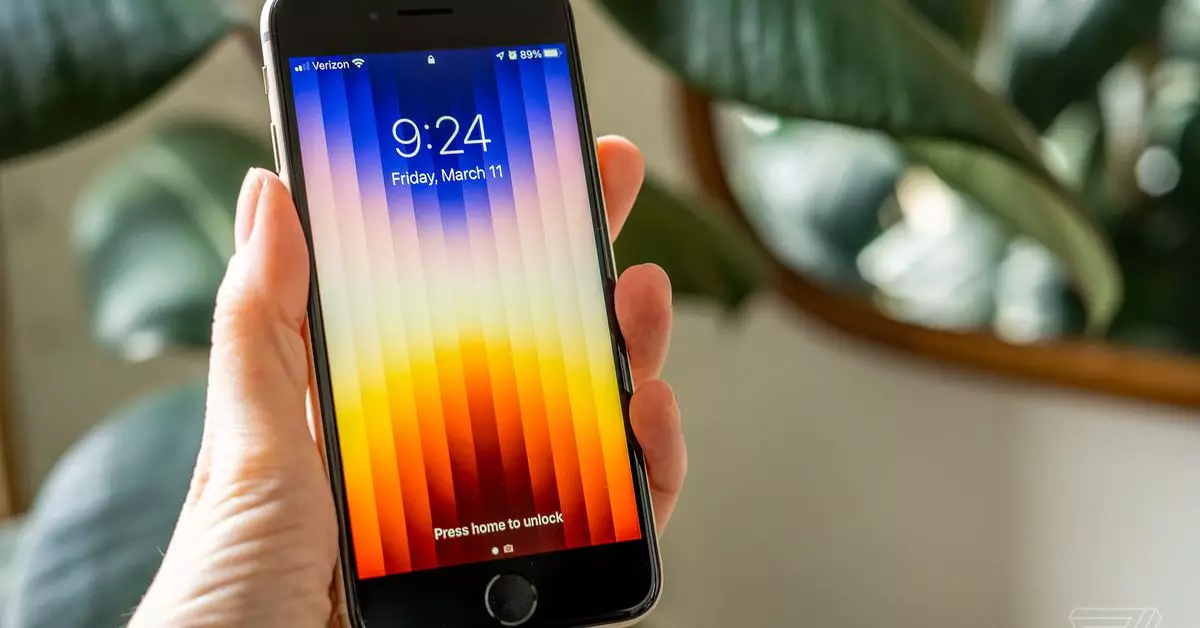In the ever-evolving world of smartphone technology, the debate between Android and iOS platforms often overshadows a critical segment of the market: the midrange phone offerings. For consumers seeking value without sacrificing quality, the Android ecosystem currently offers numerous commendable options, while Apple’s iPhone SE struggles to keep pace as a reliable alternative. This article will delve into the shortcomings of the iPhone SE, explore the competitive midrange Android landscape, and assess the potential for an improved fourth-generation SE.
Launched first in 2016, the iPhone SE made waves by housing advanced chip technology in a familiar, older design. Priced at an accessible $399, it catered to consumers who desired a budget-friendly iPhone. Now, years later, despite an increment in price to $429 for the third generation, the phone offers precious little that caters to contemporary expectations. While the SE presents attractive features like robust construction and commendable water resistance, its limitations become increasingly pronounced against competitors.
Consumers today should not have to settle for an outdated LCD display when an OLED screen is becoming standard even in lower-end Android devices. With only 64GB of base storage and a camera system that falters in low light settings, the SE represents an offering riddled with compromises. As we move deeper into 2024, these shortcomings feel less like concessions and more like outright deficiencies in a device that should be bridging the gap between accessibility and performance.
Android manufacturers, on the other hand, are continuously innovating at the midrange level, making it increasingly difficult for Apple to justify its premium price point for the iPhone SE. The Google Pixel 8A, for example, stands as a testament to what can be achieved within a more reasonable budget. Priced at $499, it offers an impressive array of features: an OLED display, top-notch camera capabilities, and generous storage, along with an outstanding commitment to long-term OS updates.
In addition to Google’s solid offerings, Samsung has also stepped up with attractive options like the Galaxy A35. While the decision to skip certain models in the U.S. may be disappointing, the A35 remains available to consumers at a similar price point as the SE, while providing a superior feature set. As Android vendors tirelessly enhance their midrange offerings, the iPhone SE begins to seem outdated and uninspired.
Despite the current deficiencies of the existing iPhone SE, there’s renewed hope in the form of rumors surrounding the launch of the fourth-generation SE, expected in 2025. Speculation suggests that this new model may incorporate a more modern design with slimmer bezels and an OLED display while also boosting base storage beyond the meager 64GB. Even a modest price increase to $499 could make this device a worthwhile investment, provided Apple finally listens to market feedback.
Furthermore, even without every rumored feature materializing, a refreshed design and superior storage capacity would significantly enhance its appeal. There’s considerable potential for the SE to corner the midrange market effectively, especially if Apple can apply insights gained from its recent hardware successes, like the revamped Mac Mini.
The Importance of Strategic Upgrades
The striking contrast with the Mac Mini reveals how Apple can modernize its product offerings while maintaining affordability. The latest Mini offers a robust entry point into the Mac lineup, attracting consumers who may have previously viewed Apple’s desktop offerings as prohibitively expensive. This model proves that Apple can produce high-quality devices that cater to a broader audience—an approach that would do well for the iPhone SE lineup too.
Given that a significant portion of iPhone sales consists of high-end models, it’s essential for Apple to strengthen its low-end offerings. Analyst estimates show the average selling price of an iPhone in September 2024 landing at around $1,018, reflecting a growing consumer shift toward pricier models. Yet, this trend could be abated with more midrange options, allowing users to feel less pressure to overspend.
While the iPhone SE, as it stands, may be struggling to compete in the midrange market, the potential for evolution exists. With insights from successful product lines like the Mac Mini and the competitive landscape offered by Android, Apple has an opportunity to revolutionize its approach. A thoughtfully designed fourth-generation iPhone SE could reinstate faith in Apple’s capability to deliver on both quality and value.


Leave a Reply
You must be logged in to post a comment.